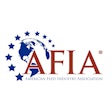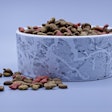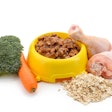The annual meeting of the Association of American Feed Control Officials (AAFCO) was held recently. The weather was very warm, though perhaps not as "hot" as some of the topics discussed during the committee sessions. I added a little fuel to the fire by introducing a petition on behalf of the American College of Veterinary Nutrition (ACVN) to amend the AAFCO Model Pet Food Regulations that would, among other things, make calorie content statements on dog and cat food labels mandatory.
For the record, I did not initiate the proposal within ACVN, though I do wholly support the concept. In my duty as the AAFCO Pet Food Committee Advisor for ACVN, it was my honor and privilege to represent the College and introduce its petition at the meeting. However, it must be noted that the comments on the matter below are mine alone, and do not necessarily reflect the opinions of ACVN or my fellow Diplomates.
The problem
In its petition to AAFCO, ACVN documents its concerns regarding the high incidence of obesity in dogs and cats in the United States. The College believes that readily-available information on the calorie content of all dog and cat foods is critical to combating this trend. Existing AAFCO regulations do require this information on "lite" and "less calories" product labels, but the lack of same on all labels makes effective comparison of all products used for the purpose of weight management, as well as determination of appropriate feeding amounts of the chosen food for a given individual animal very difficult for pet owners and veterinarians.
The College also notes that knowledge of the calorie content of a petfood is helpful when feeding any dog or cat, regardless of lifestage or whether the animal needs to lose, gain or just maintain weight. Thus, a calorie content statement on a puppy food label can be as important as one on a "lite" label, yet is not required for the puppy food under current regulations.
Expression of calories on a consistent basis (kcal ME/kg) is vital when comparing products, but is of little help in determining individual feeding amounts (as few people keep kilogram scales in their kitchens). Thus, ACVN's petition asks for mandatory expression of calorie content in familiar household units in addition to per kilogram values. Also, "pounds" is not a very good household unit, either, since few pet owners weigh out the daily amount of food for their pets. Thus, in addition to the examples of "cups" and "cans" presently in the regulations, a unit describing a large, discrete amount, such as "biscuits," would be more helpful to the consumer.
Finally, while the regulations require that the label make it clear when a product's calorie content is determined by calculation, the labeling is far less obvious as to method when calories are determined by actual feeding to animals. Since the method used can have a dramatic effect on the stated calorie content value, unambiguous declaration of which method was used is also important information for the consumer. Without that knowledge, inaccurate comparisons between products can be made.
The solution
Fortunately, all these problems can be resolved with minor amendments to the existing Model Pet Food Regulations. Presently, calorie content statements on dog and cat food labels are voluntary unless the label bears a term such as "lite" or "less calories." Thus, the first amendment would basically change the "may" in the applicable regulation to a "shall"effectively making the statement mandatory on all dog and cat food labels regardless of intended use.
A similar approach is taken to remedy the need for calorie content statements in terms of familiar household units, as well as per kilogram of food. Deleting the "may" and adding a "both" to the pertinent regulation would mandate expression of calorie content in both terms. Also amended would be the replacement of "pounds" as an example of a familiar household unit to one that would be more usable by the consumer, namely, "biscuits."
Finally, to better differentiate the method by which calorie content was determined, language was added to require a parenthetical "(fed)" when calories were estimated by means of an AAFCO metabolizable energy (digestibility) trial. The added language mimics existing language that requires a parenthetical "(calculated)" to appear when estimated by use of modified Atwater values.
The benefit
These changes to the Model Pet Food Regulations are of benefit to the consumer, as the additional knowledge provided allows both the pet owner and veterinarian to make more informed choices and reliable estimates of dietary needs. Better choices and estimates of need translate to better feeding practices, and hence healthier dogs and cats. The industry also benefits by virtue of establishment of a "level playing field," wherein all companies must fully disclose calorie content in usable terms. The proposal also helps state feed control officials meet their mandate of protecting animal health.
As the proposal was introduced only minutes before the end of the AAFCO Pet Food Committee session, there was little chance for discussion. By what I believe was a unanimous vote, the Committee did agree that the petition was worthy of further consideration. Thus, expect this topic to be on the agenda again at the "mid-year" meeting in January.














